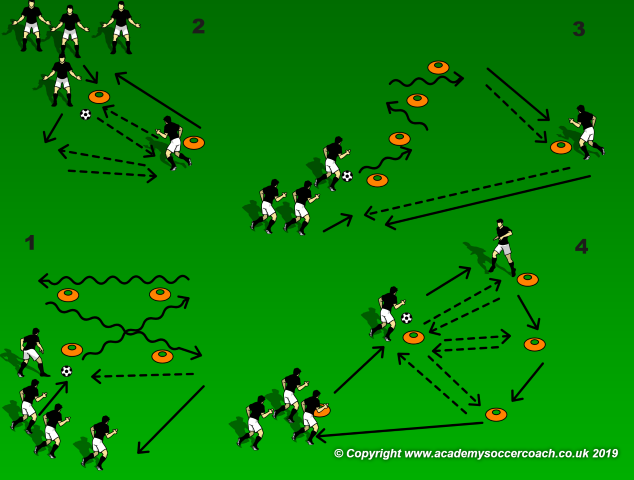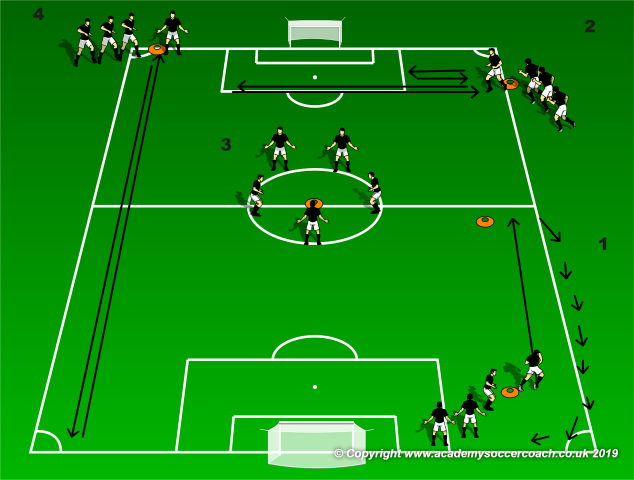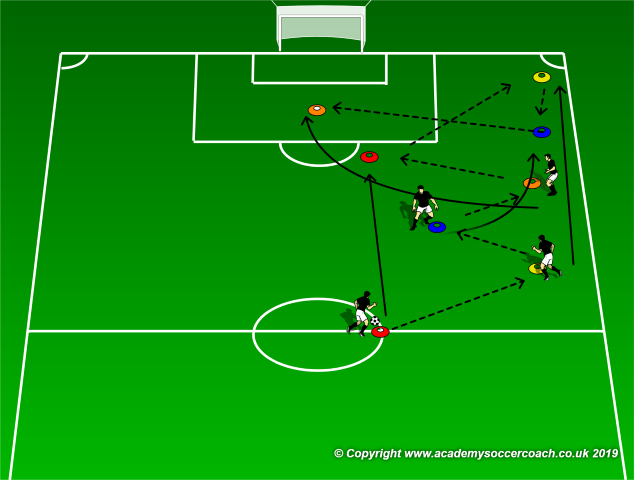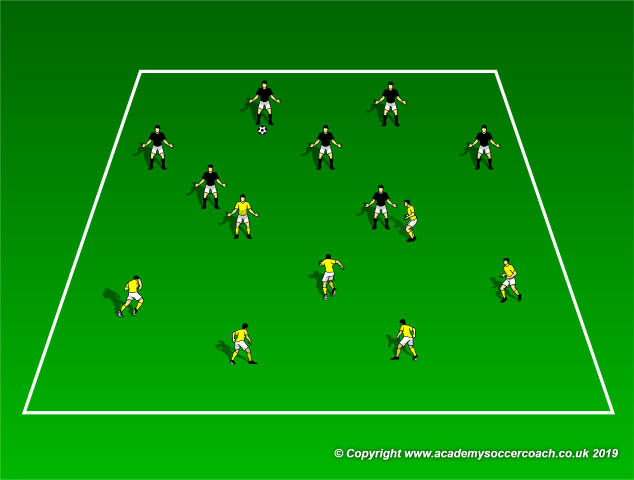By Mike Smith
Question - Do you have ideas and thoughts on how to best run high school tryouts?
Try outs in any sport at any level can be one of the most important and stressful events for players AND coaches. Because of this fact, having a good plan is a must. I am entering my 17th year as a high school soccer coach in Kentucky and my 25th year overall as a soccer coach and I can still say I don’t like try outs any more than a lot of players do. For me, there are a few guidelines I follow which I have found make try outs as “ easy” as possible as far as the stress level is concerned – and I keep mentioning stress because the impact a coach can have on a player overall, especially in a try out situation, positively and negatively , should never be understated or taken lightly. As coaches we are making people even more than we are making players whether we realize it or not. Now to the soccer stuff.
The first question I ask myself in developing my plan is “ What are we trying out for?” This could mean: 1. is this an individual showcase ( some club soccer ) or an established team? Obviously with high school sports, a team, so there are other important aspects in addition to skill which should be “ tried out”. 2. Are there specific needs we need to fill? 3. Are we constantly addressing growth and the program overall? I think a high school try out should address all of these points.
The other questions I ask : “ what are the criteria, what is the process and is the process fair and transparent?” Once these questions are addressed, the actual plan is pretty simple. For the sake of argument, let’s say we are conducting a try out for a high school team which has solid numbers, performs well most seasons and has a good mix of upper and lower classmen. In this case, I’m going to run a 2 day try out in two 3 hr sessions. This time frame reflects the amount of time a team will generally be together on game day – 1 hr prior to game time, 80 minute game with a 10 minute half time, and 15 – 30 minutes after the game to celebrate, wind down, ride home, etc…. I would also conduct the try out at the time most of the games are going to be played so for me the time is 5:30 p.m. – 8:30 p.m.
Finally, the try out times, dates, location and expectations ( like players should be on the field and ready at starting time ) should be publicized AT LEAST 1 month in advance, with reminders at 2 weeks, 1 week and 3 days out.
Day 1
5:30 – 5:45 – Welcome – Introductions ( Coaches and Staff ) – Overview of Activities
5:45 – 6:00 – Warm Up and Stretch – I like to have the players run 4 laps of the field – I watch those who cut corners – and then circle up and stretch – I again watch for those who take control and lead the stretch – dynamic stretching can be included as well here.
6:00 – 7:00 - Ball Work Stations – The first hour will be various stations set up to test foot work, passing / trapping,
first touch and overall movement. I usually walk the entire group around the course and demo each station before assigning groups and getting them going. For example:

In the diagram above, groups of 4 to 5 players move with the ball and pass through various stations. Briefly, Station 1 tests the ability to burst, cut, change direction, come under control and pass. Station 2 tests the ability to open up, hit a give and go and open up again. This can give the coach a good look at whether a player is comfortable with 1 and 2 touch passing at close range. Station 3 pairs the classic cone dribble with coming under control to make a short pass, then receive a short pass and make an accurate longer distribution Station 4 again lets the coach look at 1 and 2 touch passing with the ability to open up and move off the ball in space. These stations or similar ones could be duplicated across the pitch to accommodate the total number of players attending the try out.
7:00 – 7:30 – Conditioning – I like to put conditioning right in the middle of the ball work. I want to look at how the players respond to the ball work while they are “ fresh” and then see how they respond to some sprints, distance running and targeted body work, mainly getting their bodies in the air and then up and down from the ground. Some of the running, like a 50 yd sprint or length of the field run should be timed. My set up would look like this:

Station 1 – 40 – 60 yd sprints
Station 2- Sprint the Box
Station 3 - Push Ups, Burpees, Crunches, Plyo Jumps, Quick Feet, High Knees, Etc…
Station 4- 100 – 120 yd sprint up and back
7:30 – 8:00 Tactical Pattern Play – I use pattern play with different colored cones to test technique as well as IQ. Players simply move between their colored cones to complete the desired pattern. To start, do not let them shoot to end the pattern but add this eventually when the keepers have been adequately worked.
* DO NOT NEGLET YOUR KEEPER CANDIDATES – Any players trying out for the keeper position should be put through a dedicated keeper work out, preferably by a dedicated keeper coach.
Below is an example of a pattern:
In the drill below, groups of 4 players run a passing pattern with a color pattern to guide them, Red to Yellow to Blue To Orange. Then the players move up with designated overlapping , bent and diagonal runs. This is a great time for the coach to observe which players “ get it “ and will do the little things well. Once the groups get the pattern and can do it at speed, add the keepers and let them take turns stopping shots. The shooters should be limited to two touches inside the box when the keepers are in.

8:00 – 8:20 - Scrimmage – On day 1, I would recommend small sided scrimmage games, even simple possession in a grid or for example ( below ) scoring by receiving a pass and dribbling over the end line. This lets the coach get a better look at players and gives the players more opportunities for touches. 7 v 7 with a 2-3-2 formation will give the coach a good look at almost every aspect of the game, with specific focus on mid field and general supporting play. Again, a number of completed passes can be required before a team attempts to score and all scores must be made by receiving a ball cleanly just over the end line. Balls are thrown in from the sides and all balls out the end line which are not counted as goals are kicked in ( like a goal kick ) from the line with a 10 yd buffer for the kicker. To test defensive ability, I would encourage defending players in this scrimmage to “jockey” instead of stab and just see if when the players have to defend they close down quickly, come under control and move with the attacker in a low, side on position.

8:20 – 8:30 - Cool down stretch and wrap up – Always end the session as a group, review the session by adding positive commentary and pre view the next session with encouragement to do better. Make sure the players are encouraged to rest, hydrate and recover with adequate / good nutritional choices as well.
Documentation
Coaches should seek to document as much information as possible. I use one sheet per player with a 1-5 rating system (1- not adequate, 2- below average, 3 – average, 4 – above average, 5 – excellent) for most of the activities. I also like to have time bench marks for the running – these are great tie breakers. In addition, I like to evaluate leadership, attitude, work ethic, improvement and what I call “ X factors” , which are the things we can’t teach, the athletes just bring.
Day Two
Day two can be a similar format as day one, with a few changes to the activities as desired. My biggest recommendation for day two is to have the players play a full field, full squad match for the last hour. This gives the coaches a chance to see how the players will actually “play”, as well as their bench demeanor, ability to process directions and play under pressure in addition to other factors the coaches deem important.
I have found this basic format successful at levels from U10 through High School, and of course coaches can make modifications – additions and deletions – as needed as this is just a starting point in developing your own plan.
Good Luck!
By Mike Smith
Currently the Head Coach for University Heights Academy Boys Soccer in Hopkinsville, KY , Mike is in his 14th year as a high school head coach with 23 years coaching experience overall and 34 year as a student and fan of the game. He holds a USSF D License.


